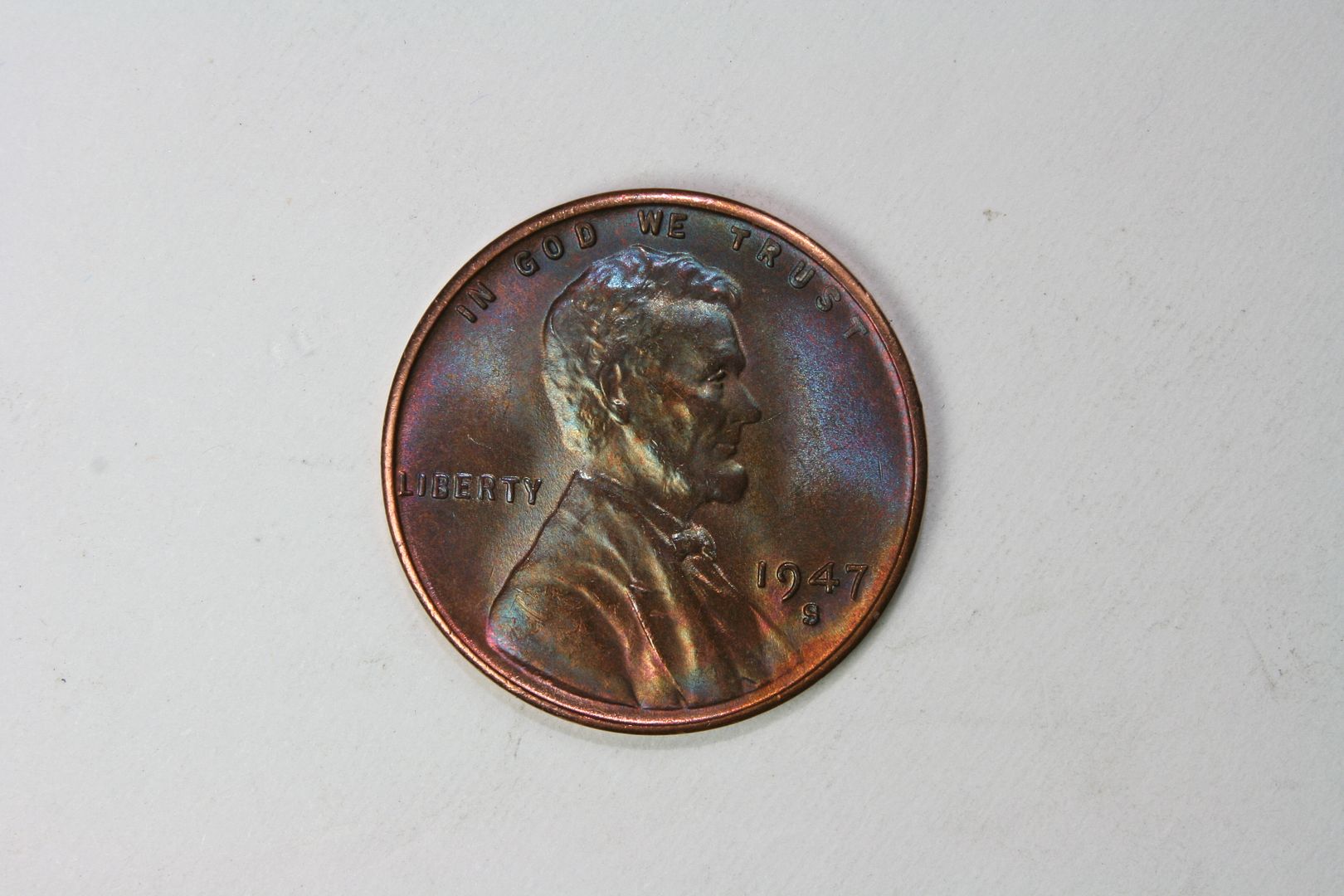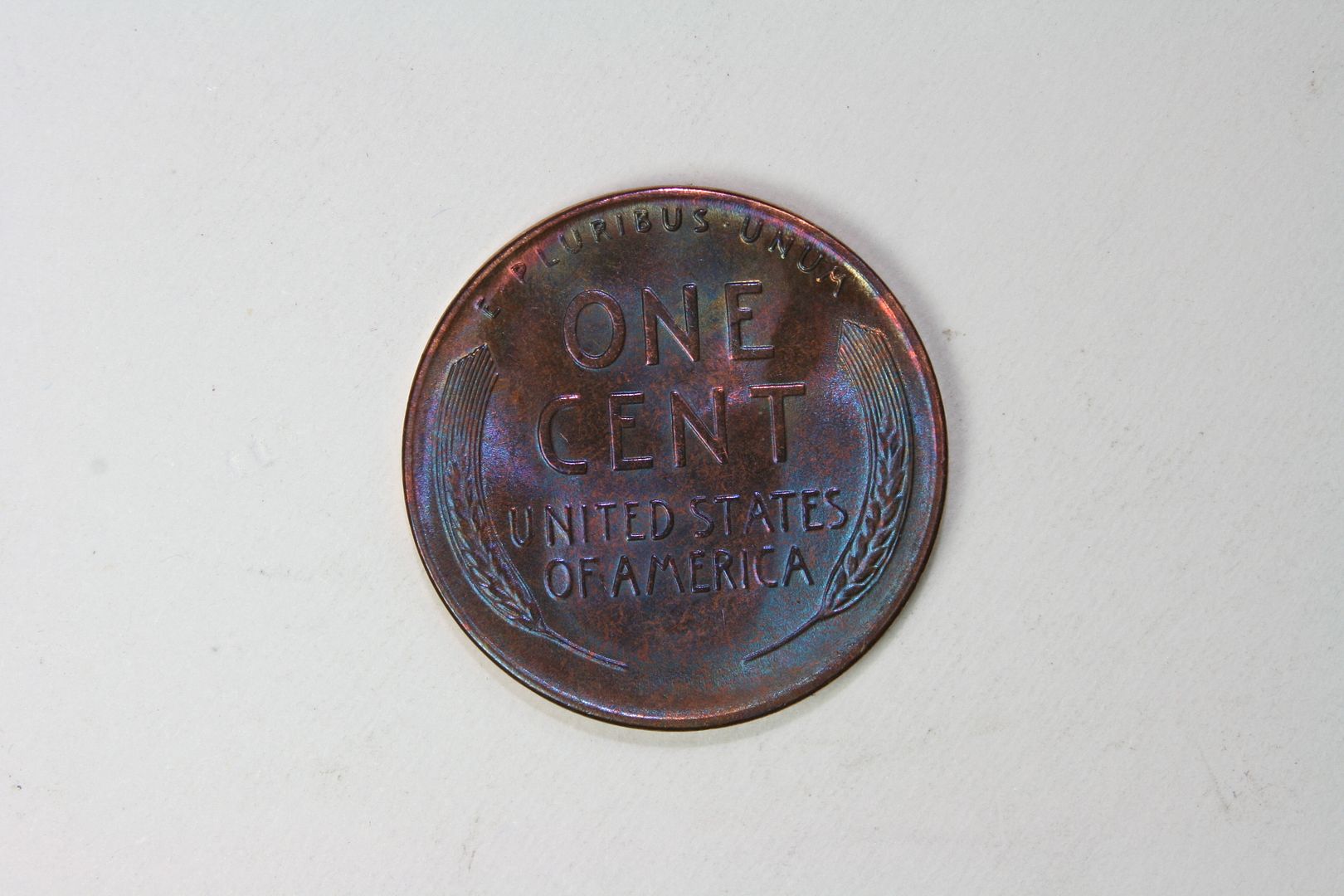Confession of an Amateur Coin Doctor
 Pushkin
Posts: 2,029 ✭✭✭
Pushkin
Posts: 2,029 ✭✭✭
Coin doctoring or coin conservation ?
“Confession is good for the soul” Old Scottish proverb
I doctored a coin today, yes, really I confess. Stopped collecting higher end, slabbed Indian Head Cents and Flying Eagle Cents some years ago – they are all gone to a better place. The apex of may efforts was a complete set of proof Flying Eagle Cents. Heck, only four coins, no big deal. I used to know a little something about the Indians and Flyers – most of that knowledge is forgotten, as are all the high end coins.
Anyway, I collect a few coins now and then, mostly F to AU Indians and Flyers for fun. Eye appeal has always been the primary criteria regardless of the grade, not plastic or popularity. Any coins collected are cracked out, if entombed in plastic, and stuck in old time Whitman folders or simply left lying around the house to enjoy over coffee or whatever. What freedom, no safe deposit box rental fees, no TL-15 safes falling through the floor, no security issues at all, and no desire to compete in set registries (I could never expect to win anyway – not a big bucks guy).
Back to “doctoring”. I have one F-XF especially attractive, not too common, but plentiful date Indian that has a beautiful, flawless, medium chocolate brown patina with great eye appeal. EXCEPT, in between two head feathers is (was) a small spot of verdigris. It is (was) only about 1 mm in diameter, but damn ugly green and growing! An attractive coin with one small flaw, but you know, the eyes ALWAYS focus on that flaw, always and forever. You wear out your fingers looking at it with a loupe.
Today I had enough; took out some Verdi-Care that I’d never used and have no experience with, and put a micro drop of it on the spot with a very fine, extremely sharp thorn from an exotic apple tree that has “stuck” me too many times over the years. With the use of a stereo microscope, thorn, Verdi-Care, heat gun and an organic cooking oil (not telling which one), I carefully, gently removed the spot, applied a micro drop of the oil and hit the Indian surgically (not easy to do) with the heat gun. Wallah, lovely coin, no eyes immediately focusing on that ugly green spot, and the satisfaction of turning something that was potentially quite attractive but extremely annoying into something attractive and that can be enjoyed for years to come. I know where the surgery was performed, but my eyes don’t care because there is nothing there but 1 mm of “doctored" patina that looks like the rest of the coin. According to posts on some online boards that deal with cleaning and restoration of ancients, the method I used will not deteriorate or change for years.
Confession - I feel ABSOLUTELY NO GUILT, no desire to swallow hemlock, turn myself in to the Secret Service, or suffer self-flagellation with brittle horsehair ropes. Coin is not for sale, maybe the grandkids will enjoy it someday, maybe the green plague will return, I don't know.
Was this a crime against numismatics? I don’t know, but it sure felt good. Would I do it again, don’t think so because I don’t have any other coins that have verdigris problems. Besides, spending three hours to turn a $50 dollar coin into a $50 dollar coin – well life is too short and time too precious, and that damn exotic apple tree can cause a lot of pain. I probably got lucky that the experiment worked. Into the Whitman folder it went.
Lower grade, low priced coins can be fun, really.
Comments
Without photos this thread is useless........LOL...always wanted to say it. Congrats!
You are probably right. However, it did provide you with the opportunity to say something you always wanted to say.
That is great.... welcome to the shady side....most collectors - although they will not admit it - have done something like this, something that purists would call 'doctoring'....and so many who discuss putting coins in a napkin on a sunny window sill, or some such exercise to promote tarnish... think that 'Oh no, this is natural'...Well, NO, if you are doing something, with intent to change the coin, technically, it is 'doctoring'...Personally, I think you did the right thing and it seems to have worked out well for you and the coin. Cheers, RickO
I don't consider your action to be "doctoring". I would call it restoration. A good thing for numismatics, I think.
I swabbed this 47-s in MS70 trying to get some haze off it, I had purchased a group of 4 of them in an old pvc flip from an antique show. Little did I know it'd turn blue. I think it's pretty, but now, I am also a shameful & loathed coin doctor.


Click on this link to see my ebay listings.
MS70 did not add the nice multicolored toning - it removed patina and gunk so the underlying toning could show up. MS70 can add some blue sheen tho, but that will go away with time - wait a year and see what it looks like.
Best, SH
Sounds more like conservation than doctoring.
Worry is the interest you pay on a debt you may not owe.
"Paper money eventually returns to its intrinsic value---zero."----Voltaire
"Everything you say should be true, but not everything true should be said."----Voltaire
Coin Doctors try to Deceive a Grading Service or a buyer in my opinion. Your intention was neither of these. Sorry you are not a Doc.
Ken
IMO conserving is removing a contminant and stabilizing the surface...allowing a nice coin to show what it already has. No change at the molecular level or some kind of chemical reaction--Just removing the macro sized gunk and keeping the coin safe afterwards.
Doctoring is changing a coin onto something that it's not. Doing something chemical, or at the molecular or micro level to make something into what it isn't already.
Cleaning is a scrubbing of some sort.
Washing is just getting rid of topical schmutz. Like acetone baths.
You took a coin with an unhealthy problem, removed the problem and stabilized the coin. Not doctoring. Well, I don't know what verdicare is...perhaps it does do something molecular, but what you described sounds like fixing a problem, not creating a whole new look.
Exactly! If you would have used acetone to remove the PVC it would have show the bright toning under it as well, just a hint less brilliant blue. I have a dozen or so pieces to do this to sitting on my desk.
Join the rest of us 'coin restorers' and that includes the TPGs too.
"“Those who sacrifice liberty for security/safety deserve neither.“(Benjamin Franklin)
"I only golf on days that end in 'Y'" (DE59)
That's not doctoring. Sorry...doesn't count. You conserved it. Sounds like PCGS couldn't have done better.
Congrats!
Lance.
Great topic and great thread. I love the part of your post where you talk about the freedom of leaving your coins laying around the house. My favorite part of my silver dollar collection is that they are all circulated grades and I don't feel bad at all leaving them outside of a 2X2 or flip. I also can store them in tubes and take them out to play any time I want
Some times a coin just needs a "washin"...not a "cleaning"...
CC
Fairlaneman:
Regarding some forms of harmful conduct, focusing on a minor case, a borderline case, or a very ambiguous case, deflects attention from the larger problem.
Attacking some corrosion or removing foreign matter on a slightly 'better date,' Fine to VF grade Indian Cent is not a grave issue.
There are people who earn or attempt to earn a substantial portion of their respective incomes by doctoring coins with the intention of deceiving graders at TPGs and everyone else. They may 'crack out' a coin that is certified as grading 64 and deliberately modify it with the idea of deceiving graders into thinking that it merits a 66 grade.
The coin doctoring problem can be contained. There is a need for more collectors to understand the seriousness of the matter and to learn to avoid doctored coins. Education and public discussion are central to solutions.
The Specter of Coin Doctoring and The Survival of Great Coins
Click to Read: Natural Toning, Dipping and Coin Doctoring, Part 3
Sorry, no "before" picture. You will have to take my word that there was a really ugly green verdigris spot on the coin. The two photos show the coin afterwards, with the second providing a circle around the location of the spot.
To my naked eye I can't see the repair. The verdigris stood out like a sore (green) thumb before surgery.
Thanks for watching.
@Pushkin...You did a great job..... nice work .... Cheers, RickO
The mentioning of using 'MS70' brings back memories of an issue discussed extensively here on the boards in the past.
One well known member (in the past) was noted for selling some beautifully blue toned high grade BU and proof Indian cents. Then... it was found out this color was the result of the person using MS70. This did not go well after that point, as it was viewed as doctoring, or at least as very deceptive, as the coins were being sold as natural.
I have not ever used MS70, so I cannot state any facts regarding this product. However, I question the comment that MS70 did not cause the blue coloring, but only removed existing covering and thus revealed the color that already existed. From the past discussions, it is my belief the product actually did cause a change in color. Perhaps someone can refresh my memory of this, if I am wrong. Regardless, at the time, it seemed there was a resulting hesitation when it came to purchasing blue toned copper coins, as it instilled a question of doctoring._
I think you conserved it, not doctored it. Glad it turned out well.
MS 70 will cause copper to turn blue and sometimes pinkish.
Grip:
Although I have never personally used this "MS 70" product, I have been told as much. I have been researching coin doctoring for many years.
Coin doctors have told me that adding deceptive blue color to copper is not difficult. I believe that I can identify fake blue on copper, though I am not familiar with all the commercial products, home-brewed formulas, and methods employed.
As one of the contributors above may have implied, fake blue on copper coins sometimes chemically transforms such that the blue color fades away. In my view, the result still is notably unnatural even when artificial blue color disappears on its own. Slow and harmful chemical reactions are ongoing, which never should have been triggered from the onset.
Click to Read: Natural Toning, Dipping and Coin Doctoring, Part 3
How will Coin Collectors Interpret Certified Coin Grades in the Future?
Insightful10@gmail.com
MS70 will DEFINITELY cause copper to turn blue.... Cheers, RickO
Proper, competent coin conservation is a good thing. Great job you did for that coin.
Successful transactions with : MICHAELDIXON, Manorcourtman, Bochiman, bolivarshagnasty, AUandAG, onlyroosies, chumley, Weiss, jdimmick, BAJJERFAN, gene1978, TJM965, Smittys, GRANDAM, JTHawaii, mainejoe, softparade, derryb, Ricko
Bad transactions with : nobody to date